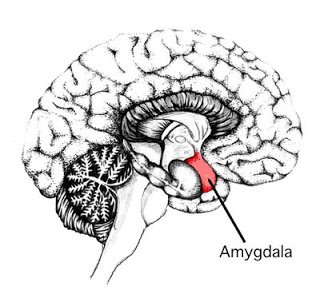In a recent coup (haha), they appear to have figured out the whole ‘personal bubble’ issue. Well, to be more precise, they’ve figured out which brain structure is responsible.
Fascinatingly, it’s the amygdala. This is the region in our brain responsible for feelings of fear, anger, and other strong negative emotions (I’m sure it was mentioned in the last episode of Fringe, actually).

It seems that lesions or other ‘damage’ or dysfunctions in the amygdala mean that the person in question is comfortable at closer proximities to others than is usually the case. In fact, it appears that, for some people at least, they have no sense of personal space at all - they can feel completely comfortable standing nose to nose! Which makes me wonder: do all the people in those chewing gum ads people have dysfunctional amygdalas?
Happily, the researchers also considered the role that culture may play in perceptions of personal space: I know from personal experience that these can vary widely, and consequently cause a fair amount of unease in the person used to a larger bubble. Apparently, they think that culture and experience may, over time, affect the brain and how it responds to situations (yes, the brain is plastic and learns…). Makes sense.